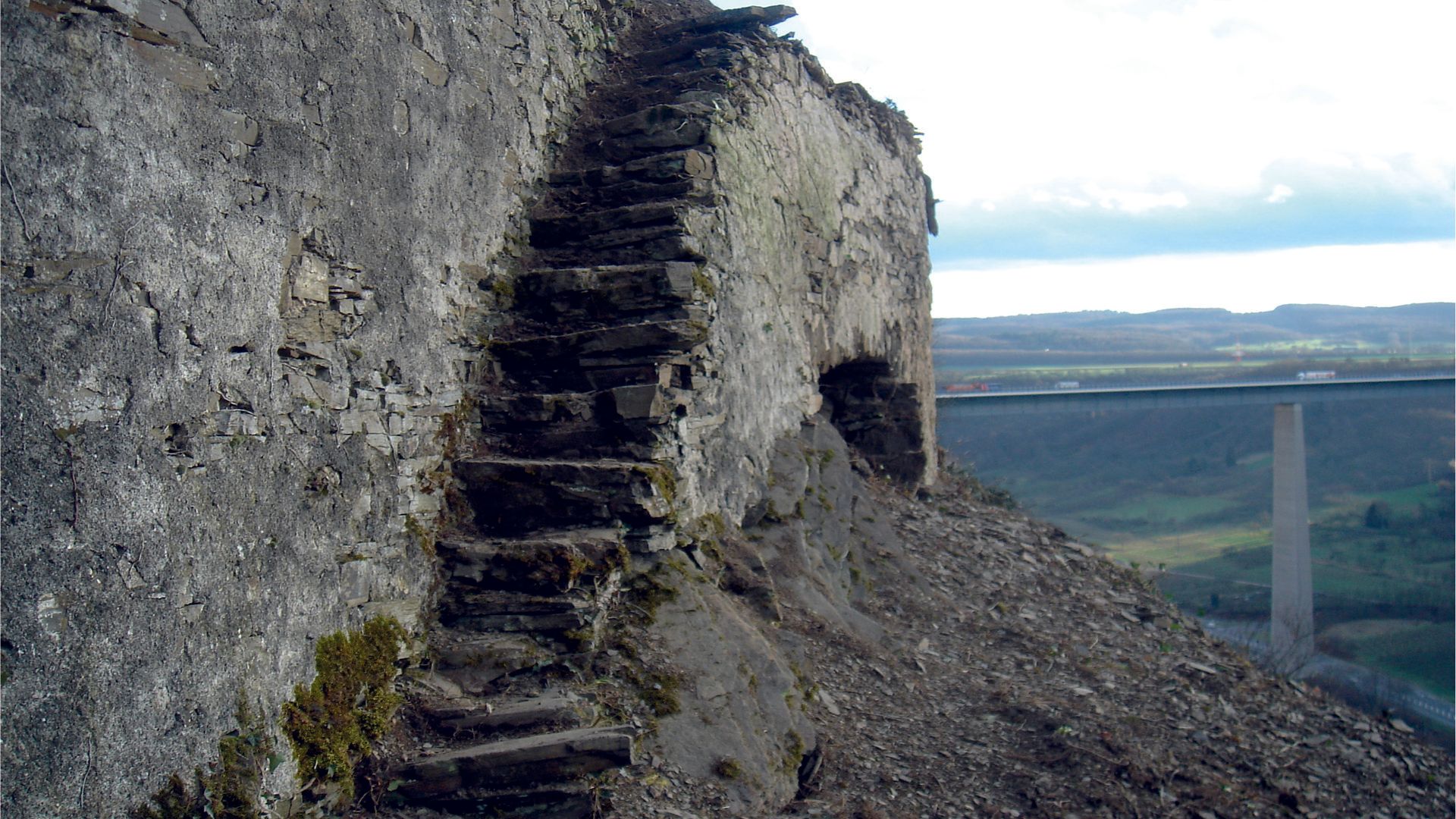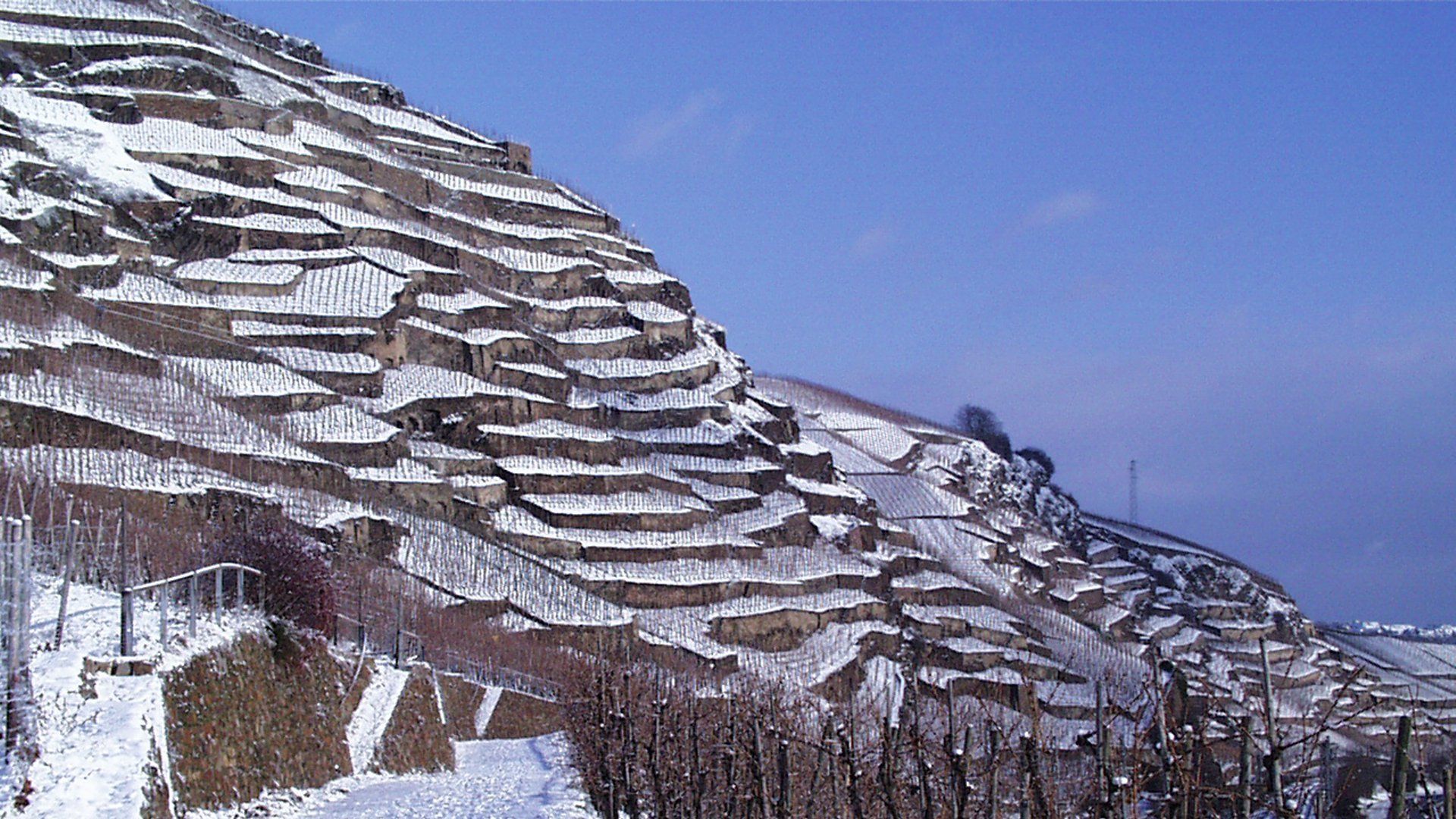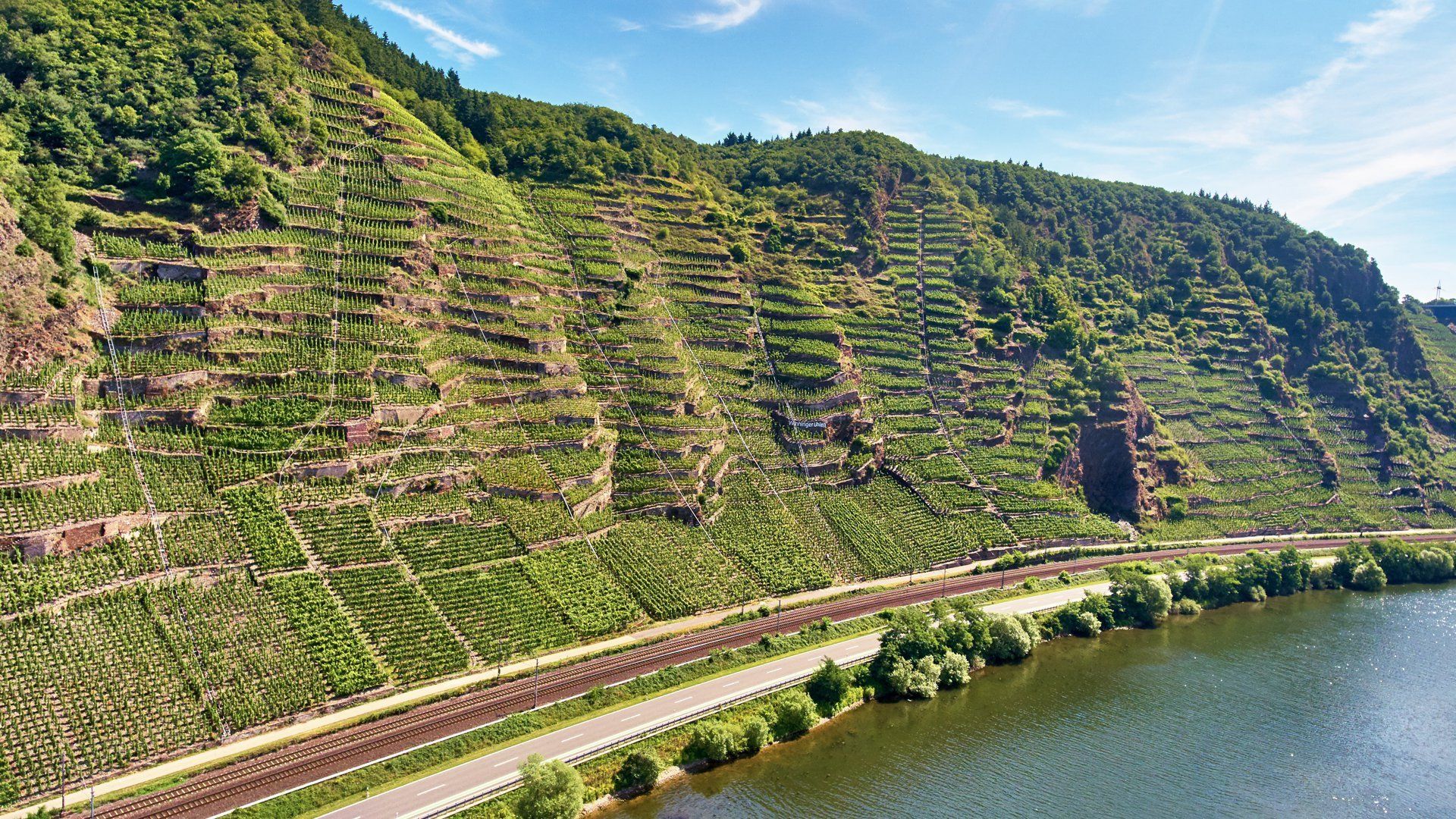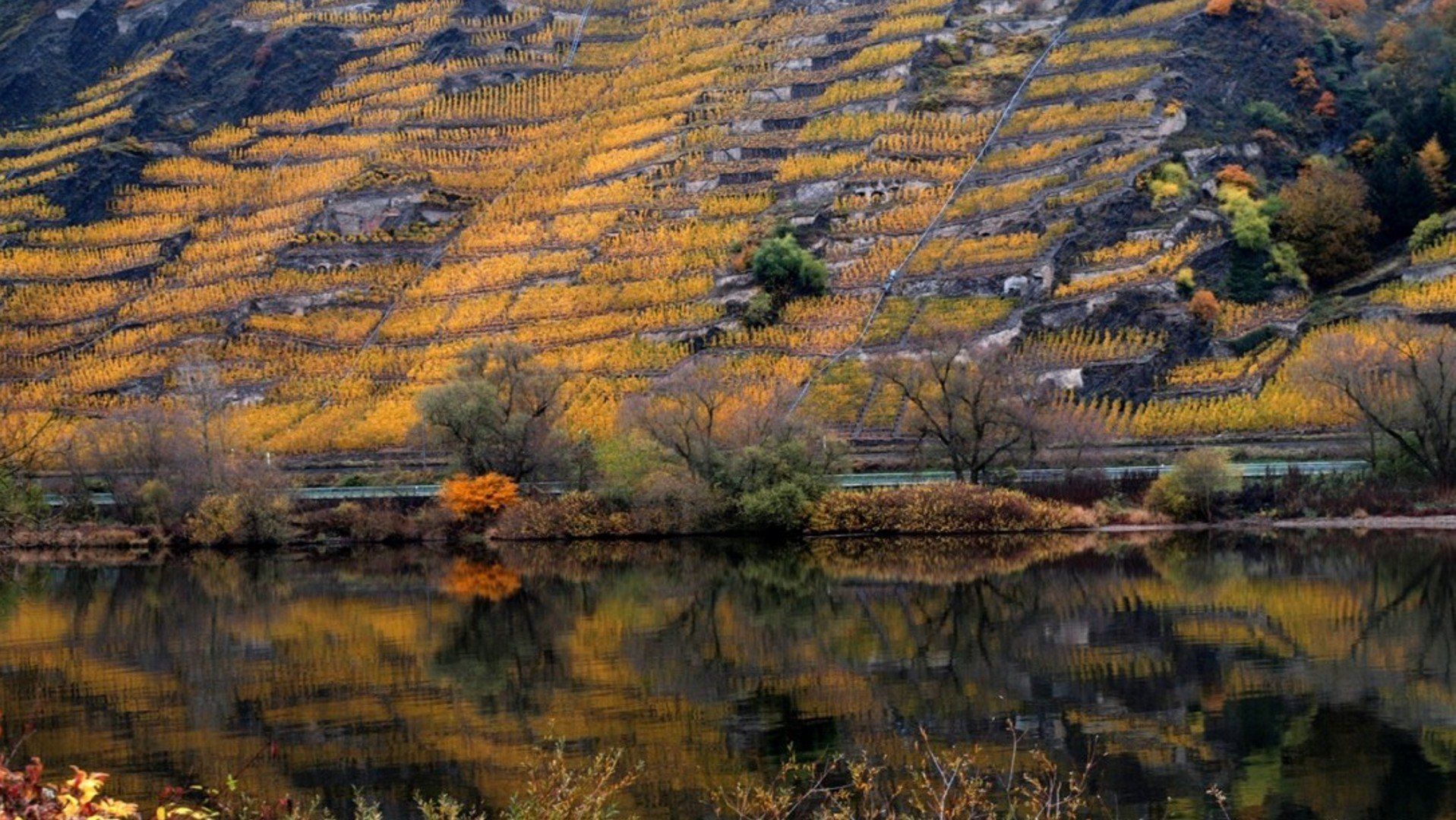Terraces> terrace viticulture

Image title
Untertitel hier einfügenButton
Image title
Untertitel hier einfügenButtonImage title
Untertitel hier einfügenButton
Image title
Untertitel hier einfügenButton
Image title
Untertitel hier einfügenButton
Image title
Untertitel hier einfügenButton
Image title
Untertitel hier einfügenButton
Image title
Untertitel hier einfügenButton
Image title
Untertitel hier einfügenButton
Image title
Untertitel hier einfügenButton
Image title
Untertitel hier einfügenButton
Terraced Viticulture
Anachronism or Avant-garde?
Vineyards as natural landscape? That would certainly be a major exception to the rule. One can perhaps concede the Sioux conservation park in South Dakota, where our winegrower friend Elder Nygaard is allowed to harvest the grapes that grow wild on tree-hugging vines.
Winegrowing has ever been shaped by the intervention of humans into nature, and might well in fact be the oldest form of agri-culture. Culture? Is modern winegrowing still ‘culture,’ in the sense of a contribution to civilization? The term “natural wine,” which is enjoying popularity at the moment, is a clever distractionary ploy. “Natural” lends itself wonderfully to ideological (marketing) pitches involving the kind of distortion of good old Mother Nature favored by philosophers of original sin, dreamers of matriarchy and kitchy Romantics. An honest, contemporary approach looks a bit different: what would a sensible interaction between people and nature look like? Where and how can that which is despoiled by force also be given loving accompaniment?
The domestication of steep slopes to form the hanging gardens of the Mosella was an unbelievable act of civilization by our forebears. Venturing hin to break stones from the hillsides, building walls to reduce the steepness of the cliffs to a manageable 100 percent, backfilling the hollow space with earth, stones and vegetal remains and then, finally, planting the vines. We must tip our hats to this enormous cultural achievement. Nobody today would put in that kind of investment. A conservative estimate figures the creation of one hectare of terraced vineyards right now would probably cost around 1.5 million euros. Even if we presume the creation of an extremely optimistic 100 terraces, it's still a chimerical undertaking. If nothing else at least we can preserve those terraces! But my word, repairing those walls and tending the grapes is massively labor intensive. We have 13 km of vineyard walls at our estate. Instead of the 250-600 hours it would take using machinery, we need over 2000 hours of manual labor to cultivate just one hectare properly and sustainably. Ugh...
Of the roughly 100,000 hectares under vine in Germany today, only 750 of them — less than one percent — are terraced. In light of this, many seem to feel that terraces must be protected and supported as a crucial ecological/agricultural treasure, perhaps as heritage landscapes to be marketed to tourists.
With us winegrowers as state-supported museum guards? No thanks!
In the late 19th century, a master craftsman had to work 3–4 days to earn enough to purchase one square meter in Uhlen. Today it would take only 20 minutes. And back then a bottle of wine from Uhlen cost as much as Chateau Margaux, a Röttgen as much as a Clos du Roi. Today they are closer to 1:20. Now don’t worry — we won’t be asking for 500 euros per bottle to keep cultivating the terraces sustainably on our own. But...
November 2020. As in every year, the VINUM wine guide — once Gault-Millau — honors winemakers and wines. Their Top 10 Dry German Rieslings lists only one wine from the Mosel, our 2019 Uhlen Laubach. Price 37 euros. The other wines all grew in parcels farmed by tractor. Their average price: 132 euros (without even counting the solid 2k for the most expensive wine).
We are optimistic. Because parallel to the advancing industrialization of wine and optimization of taste profiles using an ever-increasing portfolio of food design tricks, a counter-movement is forming around the globe as well. Certainly, the niche for culture-infused wines remains very small. But how many vineyards really exist that bring forth singularities of the soil and climate, year after year? What are five hectares of Uhlen Laubach, with their truly unique taste, for the world market? How many wine freaks and restaurants will want a share of the 10,000 bottles of Uhlen Blaufüsser Lay, vibrating with slate as they do.
Sustainable winegrowing in our extreme terraces is anything but an anachronistic relic. It is part of the wine culture avant-garde.
Vineyards as natural landscape? That would certainly be a major exception to the rule. One can perhaps concede the Sioux conservation park in South Dakota, where our winegrower friend Elder Nygaard is allowed to harvest the grapes that grow wild on tree-hugging vines.
Winegrowing has ever been shaped by the intervention of humans into nature, and might well in fact be the oldest form of agri-culture. Culture? Is modern winegrowing still ‘culture,’ in the sense of a contribution to civilization? The term “natural wine,” which is enjoying popularity at the moment, is a clever distractionary ploy. “Natural” lends itself wonderfully to ideological (marketing) pitches involving the kind of distortion of good old Mother Nature favored by philosophers of original sin, dreamers of matriarchy and kitchy Romantics. An honest, contemporary approach looks a bit different: what would a sensible interaction between people and nature look like? Where and how can that which is despoiled by force also be given loving accompaniment?
The domestication of steep slopes to form the hanging gardens of the Mosella was an unbelievable act of civilization by our forebears. Venturing hin to break stones from the hillsides, building walls to reduce the steepness of the cliffs to a manageable 100 percent, backfilling the hollow space with earth, stones and vegetal remains and then, finally, planting the vines. We must tip our hats to this enormous cultural achievement. Nobody today would put in that kind of investment. A conservative estimate figures the creation of one hectare of terraced vineyards right now would probably cost around 1.5 million euros. Even if we presume the creation of an extremely optimistic 100 terraces, it's still a chimerical undertaking. If nothing else at least we can preserve those terraces! But my word, repairing those walls and tending the grapes is massively labor intensive. We have 13 km of vineyard walls at our estate. Instead of the 250-600 hours it would take using machinery, we need over 2000 hours of manual labor to cultivate just one hectare properly and sustainably. Ugh...
Of the roughly 100,000 hectares under vine in Germany today, only 750 of them — less than one percent — are terraced. In light of this, many seem to feel that terraces must be protected and supported as a crucial ecological/agricultural treasure, perhaps as heritage landscapes to be marketed to tourists.
With us winegrowers as state-supported museum guards? No thanks!
In the late 19th century, a master craftsman had to work 3–4 days to earn enough to purchase one square meter in Uhlen. Today it would take only 20 minutes. And back then a bottle of wine from Uhlen cost as much as Chateau Margaux, a Röttgen as much as a Clos du Roi. Today they are closer to 1:20. Now don’t worry — we won’t be asking for 500 euros per bottle to keep cultivating the terraces sustainably on our own. But...
November 2020. As in every year, the VINUM wine guide — once Gault-Millau — honors winemakers and wines. Their Top 10 Dry German Rieslings lists only one wine from the Mosel, our 2019 Uhlen Laubach. Price 37 euros. The other wines all grew in parcels farmed by tractor. Their average price: 132 euros (without even counting the solid 2k for the most expensive wine).
We are optimistic. Because parallel to the advancing industrialization of wine and optimization of taste profiles using an ever-increasing portfolio of food design tricks, a counter-movement is forming around the globe as well. Certainly, the niche for culture-infused wines remains very small. But how many vineyards really exist that bring forth singularities of the soil and climate, year after year? What are five hectares of Uhlen Laubach, with their truly unique taste, for the world market? How many wine freaks and restaurants will want a share of the 10,000 bottles of Uhlen Blaufüsser Lay, vibrating with slate as they do.
Sustainable winegrowing in our extreme terraces is anything but an anachronistic relic. It is part of the wine culture avant-garde.














